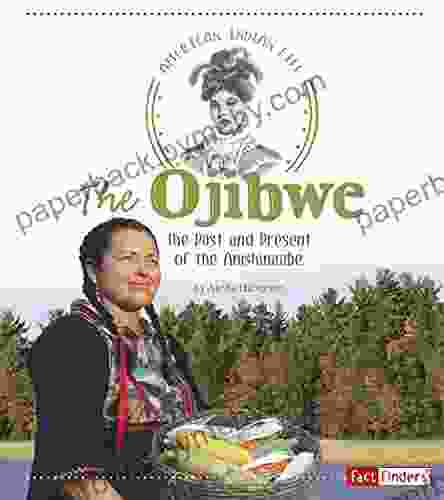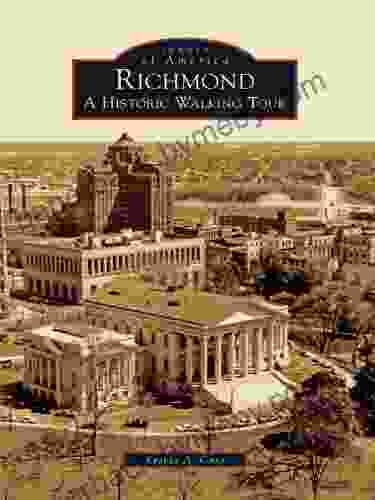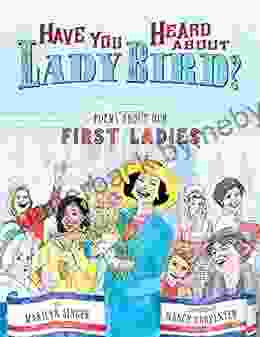Unveiling the Tapestry of Anishinaabe Heritage: Past and Present


In the heart of North America, where sprawling forests meet shimmering lakes, resides a vibrant and ancient people known as the Anishinaabe.
4.5 out of 5
| Language | : | English |
| File size | : | 26723 KB |
| Print length | : | 32 pages |
The Anishinaabe, meaning "the Original People," have a rich and multifaceted history that has shaped their unique identity and culture. From their nomadic origins to their present-day communities, this extraordinary group has left an indelible mark on the tapestry of American life.
A Journey Through Time: The Anishinaabe Past
The Anishinaabe have inhabited the Great Lakes region for centuries, their roots tracing back to the eastern woodlands. Before European contact, they lived a semi-nomadic lifestyle, following the seasonal movements of game and fish.
Their intricate social structure was based on clans, each with its own distinct responsibilities and traditions. The Anishinaabe had a deep connection to the natural world, believing that all living beings possessed a spirit.
With the arrival of Europeans, the Anishinaabe faced significant challenges, including the loss of land and the disruption of their way of life. They fought valiantly to preserve their culture and identity, engaging in wars and treaties that shaped their relationship with the United States.
A Thriving Present: The Anishinaabe Today
Despite the challenges of the past, the Anishinaabe have emerged as a resilient and vibrant nation. They have established thriving communities throughout the Great Lakes region and beyond.
Anishinaabe culture is alive and thriving, expressed through traditional ceremonies, arts, and language. Powwows, where dancers and drummers gather to celebrate their heritage, remain an important part of Anishinaabe life.
The Anishinaabe have also made significant contributions to modern society. They have served in the military, excelled in education and business, and advocated for the rights of indigenous peoples.
Pillars of Anishinaabe Culture
The Anishinaabe have maintained their unique identity through a vibrant tapestry of traditions and beliefs.
Clan System
The Anishinaabe are organized into seven clans: Bear, Wolf, Turtle, Loon, Beaver, Eagle, and Crane. Each clan has its own history, responsibilities, and totemic animal.
Spiritual Beliefs
The Anishinaabe believe in a Great Spirit called Gitche Manitou, who created the world and all living beings. They also have a deep reverence for nature and believe in the interconnectedness of all things.
Traditional Arts
Anishinaabe artists create exquisite works of art, including intricate beadwork, quillwork, birchbark canoes, and wood carvings. Their art often depicts stories, legends, and spiritual beliefs.
Language
The Anishinaabe language, Ojibwe, is a member of the Algonquian language family. It is spoken by over 100,000 people in the United States and Canada, and is an important part of Anishinaabe cultural identity.
Preserving the Anishinaabe Legacy
In recent years, there has been a growing movement to preserve and revitalize Anishinaabe culture. This includes efforts to teach the Ojibwe language, promote traditional arts, and protect sacred lands.
The Anishinaabe have also established numerous cultural and educational centers, museums, and archives. These institutions serve as a repository for their history, traditions, and artwork, ensuring that future generations can appreciate the richness of their heritage.
The Anishinaabe American Indian people are a testament to resilience, cultural preservation, and the enduring spirit of a nation. From their ancient origins to their thriving present, they have woven a vibrant tapestry of history and heritage that continues to inspire and enrich the world.
By understanding the past and present of the Anishinaabe, we gain a deeper appreciation for the diversity, resilience, and contributions of indigenous peoples in shaping the fabric of America.
4.5 out of 5
| Language | : | English |
| File size | : | 26723 KB |
| Print length | : | 32 pages |
Do you want to contribute by writing guest posts on this blog?
Please contact us and send us a resume of previous articles that you have written.
 Book
Book Novel
Novel Page
Page Chapter
Chapter Text
Text Story
Story Genre
Genre Reader
Reader Library
Library Paperback
Paperback E-book
E-book Magazine
Magazine Newspaper
Newspaper Paragraph
Paragraph Sentence
Sentence Bookmark
Bookmark Shelf
Shelf Glossary
Glossary Bibliography
Bibliography Foreword
Foreword Preface
Preface Synopsis
Synopsis Annotation
Annotation Footnote
Footnote Manuscript
Manuscript Scroll
Scroll Codex
Codex Tome
Tome Bestseller
Bestseller Classics
Classics Library card
Library card Narrative
Narrative Biography
Biography Autobiography
Autobiography Memoir
Memoir Reference
Reference Encyclopedia
Encyclopedia Kim Heinbuch
Kim Heinbuch Keshav Ramesh
Keshav Ramesh Kenneth C Roebuck
Kenneth C Roebuck Ken Hyland
Ken Hyland Penguin Young Readers Licenses
Penguin Young Readers Licenses Kenneth W Noe
Kenneth W Noe Margaret Willson
Margaret Willson Melissa Daimler
Melissa Daimler Victoria Laurie
Victoria Laurie Kim Smith
Kim Smith Kerry Hamm
Kerry Hamm Mary Kubica
Mary Kubica Oh Great
Oh Great Wayne Stewart
Wayne Stewart Francisco Martin Rayo
Francisco Martin Rayo Norm Feuti
Norm Feuti Simran Jeet Singh
Simran Jeet Singh Ralph Cockburn
Ralph Cockburn Tim Moore
Tim Moore Masih Alinejad
Masih Alinejad
Light bulbAdvertise smarter! Our strategic ad space ensures maximum exposure. Reserve your spot today!

 Hunter MitchellEmpower Your Children: How to Prepare Kids to Confront Today's Complex Moral...
Hunter MitchellEmpower Your Children: How to Prepare Kids to Confront Today's Complex Moral...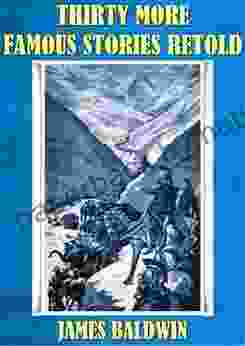
 Ralph Waldo EmersonThirty More Famous Stories: Retold Illustrated - A Timeless Treasure for...
Ralph Waldo EmersonThirty More Famous Stories: Retold Illustrated - A Timeless Treasure for... Jon ReedFollow ·14.7k
Jon ReedFollow ·14.7k Houston PowellFollow ·13k
Houston PowellFollow ·13k Osamu DazaiFollow ·2.2k
Osamu DazaiFollow ·2.2k Alex FosterFollow ·4.2k
Alex FosterFollow ·4.2k Damon HayesFollow ·7.4k
Damon HayesFollow ·7.4k Franklin BellFollow ·12.6k
Franklin BellFollow ·12.6k Ibrahim BlairFollow ·12.2k
Ibrahim BlairFollow ·12.2k Tom ClancyFollow ·7.3k
Tom ClancyFollow ·7.3k
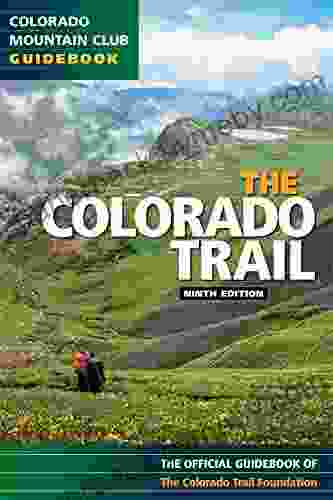
 Isaac Asimov
Isaac AsimovEmbark on an Epic Adventure: The Colorado Trail 9th...
Unveiling the Treasures of the Colorado...
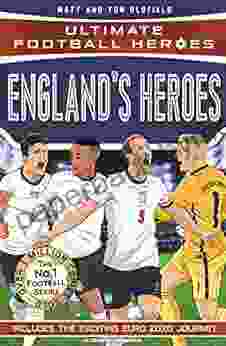
 Clinton Reed
Clinton ReedUltimate Football Heroes: Uncover the Gridiron Greatness...
Enter the World...

 Ibrahim Blair
Ibrahim BlairUnveiling the Secrets of Stolen Focus: A Journey to...
In today's relentless digital...

 Colt Simmons
Colt SimmonsRediscover the Founding Father's Vision: Thomas Jefferson...
Immerse Yourself in the Unedited Words of...

 Juan Butler
Juan ButlerExcel in Language Learning: The Ultimate Self-Study...
Unlock Your Language Potential with Our...
4.5 out of 5
| Language | : | English |
| File size | : | 26723 KB |
| Print length | : | 32 pages |


